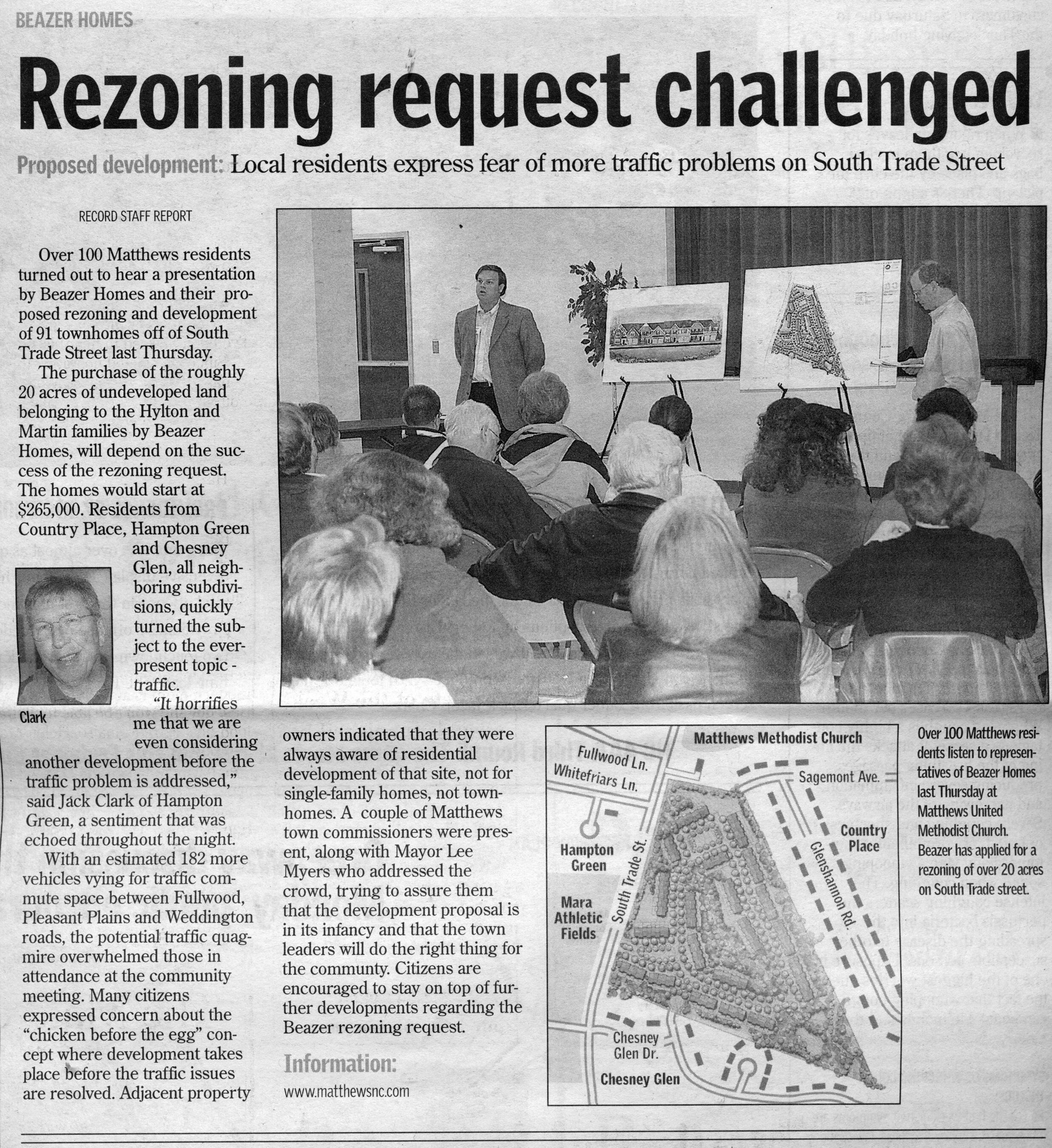With permission, The Beacon is archiving past issues of Matthews News (also called Matthews News and Record and The Matthews Record) articles online. Throwback Thursday articles will include relevant content still facing Matthews today. This article was originally published January 17, 1991 and was written by Beverly Brock.
Tree preservation center of Council debate
by Beverly Brock
Riding the ever-swelling tide of ecological consciousness, the Matthews Town Council discussed an overlay district plan that incorporated extensive landscape and tree requirements at its meeting Monday, Jan. 7.
After four hours of debating and altering individual sections of the district plan, the Council unanimously approved it just after midnight. The overlay district is a plan that developers will have to uphold along the new N.C. Highway 51 by-pass.
“I like the discussions; I like the debates,” Commissioner Lee Myers, an attorney, said. “We compromised on several things, and it’s a heck of a lot better than doing nothing.”
Matthews Mayor Shawn Lemmond agreed. “We enjoy that kind of stuff every once in a while. A lot of people thing they (the Council) vote as they’re told or with little discussion.”
Words such as “storm water detention,” “drip lines,” “buffer areas,” and “street scapes” were part of this lengthy discussion. Al this discussion came down to two fields of thought: 1) strict guidelines and requirements are necessary to preserve trees and greenspace versus 2) guidelines that are too stringent will stifle development and prove too costly for developers.
“There’s a lot of gray in this one,” Lemmond said of the overlay district debate. “There’s not a lot of white or black. Unlike in years past, however, we were all the same in our goals. I think we arrived at a democratically-agreed document.”
“Ten years ago (tree preservation) wouldn’t have been considered,” Lemmond continued. It is the rapid development in and around Matthews and the current push on the state and county levels for tree preservation that has made environment an issue, according to Lemmond.
“We are well aware that the legislation of trees is a hot topic on the state level,” Lemmond said. “Legislating trees is a new one in development. Those laws are being questioned on a daily basis. There are lot of conflicting opinions on what the legislature should accomplish.”
According to Commissioner Alex Sabo, “The goal of the whole country, so to speak, is preservation of our natural resources. Each time that each of us does our part it adds to the conservation, but it has to start with the individuals.”
“We are here because there are people who are irresponsible in preserving the earth,” Myers, who favored strict regulations, said in an interview after the meeting.”
Commissioner Alex Sabo, who has been a long time supporter of conservation, said, “I want to make sure people can tell when Charlotte ends and Matthews begins.”
A good deal of debate was fought between natural landscaping versus streetscapes. “I would like to leave it as natural as possible, but let’s make it organized,” Sabo said. Part of the organization is stipulating density, size, growth patterns and types of trees and shrubbery allowed in landscaping.
“We’ve had too many instances of developers coming in on a multi-track of land with a bulldozer and tearing down every tree on that tract of land,” Myers said. Myers first worked on the landscaping ordinance when he first became a member of the board. “It was a step in the right direction for Matthews,” he said. Landscaping is something we can clearly require. I think it’s clearly a legitimate condition for a CD (Conditional District) zoning.
“We have not yet, in my opinion, achieved the type of tree preservation and landscaping that we need in Matthews,” Myers continued. “What took God and nature 150 years to put on this earth takes a person and a bulldozer less than an hour to get rid of.” Some of the compromises reached were: requirement of a 30-foot buffer beyond the road’s 15 feet of right-of-way; establishing a street scape of willow oaks; requirement that each landowner provide for storm water retention; and requirement of 25 percent of the owners’ property be devoted to greenways.










